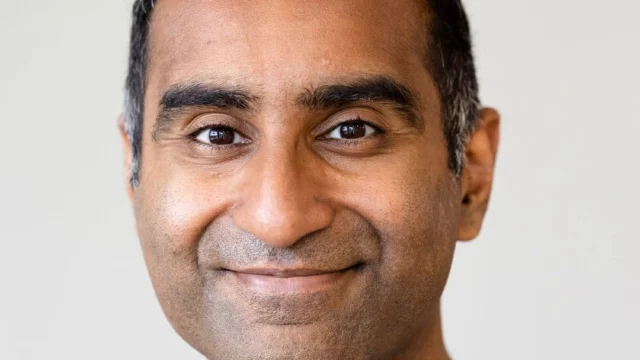
Lessons for biotech founders navigating an uncertain market
After a remarkably challenging 2023 for small companies trying to raise money and bring new medicines to patients, the outlook for this year is defined by cautious optimism amongst executives and investors
Hong Kong based Adrian Lam spent the first seven years of his career developing medical devices and leading R&D teams, and the next ten years investing in them. Adrian was an early R&D and BD Executive at Genesis Medtech, a venture-funded Medtech platform that rapidly reached unicorn status at only 14 months from inception. His investment firm, Bioworld Ventures, has invested in numerous projects with a number of successful exits, from liquid biopsies to cell and gene therapies, and everything in between.
An investor-operator with a wealth of knowledge on the global landscape, Adrian really has seen it all – the breakthroughs, the setbacks, the evolving trends and constant innovation of an industry that in 2022, was responsible for 67% of all new therapies, dominating the R&D pipeline. We speak to Adrian for his perspective on what small companies in Asia should bear in mind as they try and fundraise in an uncertain market on the precipice of recovery.

Think holistically about the unmet need – it isn’t always at the patient level
We may hear the words ‘unmet need’ all the time in healthcare, but this need isn’t always a scientific one, and for founders who are competing for investment dollars, how they articulate the unmet need their company is solving can be the difference between closing a round or not. According to Adrian, this doesn’t only mean at the clinical or patient level – it’s important for founders to know how to convincingly tell the story of an investable business hypothesis that considers the nature of the industry and the behaviour of its stakeholders.
“A lot of the time the unmet need is scientific in nature, but in a highly regulated market like healthcare, it is often not solely scientific. Founders should think holistically, comprehensively and incisively about discovering and defining the unmet need, a process that also takes into account the needs of the various stakeholders in the healthcare system and the decision science and behavioural economics that drive them.”
This unmet need will look different for stakeholders throughout the value chain, Adrian cautions.
“A technology, perhaps a liquid biopsy for testing cancer, that reduces the number of scans a cancer patient needs may be good for the patient and the payor, but bad for the hospital whose radiology suite is a profit centre. Founders need to analyse the disease area they are trying to improve through the lens of decision science and behavioural economics – this means talking not only to doctors, but to nurses, distributors, payors, policymakers, and patients and their families.”
In this scenario, a founder would need to consider the balance between the revenue generating needs of the hospital and the benefit of greater efficiency for the professionals delivering care, showing that their innovation could free up time for the hospital to deliver higher value services.
Step out of your comfort zone and your own backyard when seeking funding or advice
Defining and articulating the unmet need is more challenging for entrepreneurs in nascent markets like Hong Kong and Singapore, versus in hubs like Boston or the Bay Area, Adrian says. This is because of lower ‘tribal’ knowledge within the ecosystem and how much access founders have to thought leaders who can help refine and improve their ideas. “Start-ups in Singapore and Hong Kong have more work to do, actually, since sophisticated investors are more degrees of separation away, compared to in a more mature and developed biotech ecosystem.”
According to Adrian, founders in nascent markets with an academic background may pitch highly publishable and impactful science, but if they can’t communicate how that solves a commercial problem, they’ll be in a tough spot. If they have little experience running a biotech company, they may find this change of gears challenging, especially since operational know-how and industry best-practices aren’t readily available in nascent markets. This means it’s important to be guided by other founders who have done it all before, and who are plugged in to existing support systems.
Great science must be supplemented with strategy, and in today’s market, it’s up to the entrepreneur to be resourceful by tapping in to commercially minded partners or peers. Becoming a scientific historian won’t hurt either, Adrian points out.
“Founders need to look more broadly across the world when it comes to benchmarking their technology and business model, and they should understand what approaches have been tried before. You need to understand history – it is extremely unlikely that nobody in the world has tried your idea before. In fact, a lot of great business ideas are those that were tried before a certain technology or feature was commercially mature. Remember the Nokia 9000?”
Go back to basics
So, what should companies at the beginning of their journey do? Going back to basics and reading case studies, journals and articles written by founders who have told the story of their entrepreneurial journey might be a good place to start.
“Some corporates and funds also post articles about why they invested in or acquired a certain technology or company. Even scientific journals like Nature or Science have case study exposés. Look at VC fund portfolios, and try to understand what they invested in and why. If your company is doing something in antibiotics, when was the last time a big pharma bought an antibiotics asset? What is their strategy for targeting multi-resistant bacteria? If you’re running a digital health or a genomics company, which companies have made it clear that they’re looking for a technology in your space, and are they putting their money where their mouth is?”
Remember that investment flows are driven by both science and markets forces, as well as healthcare initiatives
Numerous external factors influence biotech companies beyond what their founders can control – investment flows are driven by both science and markets. Being aware of what is happening in the market, and how trends might impact the business, is important for companies big and small. Entrepreneurs raising money also need to understand the concerns and limitations facing the VC funds they are trying to raise from.
According to a recent STAT news article, biotech VCs have begun to face demanding terms from Limited Partners when fundraising for their rounds – some even requesting for equity in the firm as part of the terms of their investment. Commitments from investors are taking longer, and people are far more selective about where they put their dollars. Some VCs are stuck between a rock and a hard place, which puts their portfolio companies in a tricky position.
This means that companies should think creatively about where they could secure alternative funding.
“Look for alignment with publicly disclosed healthcare initiatives, in the form of corporate sponsored or fund competitions that target an identified technology space. J&J’s QuickFire challenges are one example of that. There are also initiatives funded by interested parties within a specific area, for example, lowering the use of fluorescent dyes during radiological imaging by using computer vision, or reducing dosages of certain drugs using continuous monitoring of certain biomarkers. The Gates Foundation, Wellcome Trust, and even patient support groups, could provide alternative financing if traditional routes are proving difficult.”
According to Adrian, investment flows have become divergent, and conservatism and discernment is back big-time.
“The companies being financed right now are early stage start-ups with lower valuations, or later-stage rounds for companies with validated science and a clearer line of sight to an exit, perhaps through M&A discussions with revenues around the corner. Companies who are sitting on previous offers and waiting for a better one, are also in a strong position.” This is reflected in data from Pitchbook’s Q4 2023 Biopharma report, showing a discerning exit landscape with M&A and IPOs reflecting a pivot towards clinical validation. Deals in emerging therapies were at their lowest last year.

Source: PitchBook • Geography: Global • *As of December 31, 2023
On a more positive note, Adrian says there is still an appetite for biotechs with purpose-driven mandates that are focused on delivering positive societal impact. Verge HealthTech, a firm Adrian is a Venture Partner at, invests in early stage companies focusing on patient impact, global reach and health inequality, which has recently helped them attract a noteworthy new partner. “They were raising a Fund II and J&J Impact Ventures invested in them. At risk of stating the obvious, founders need to be genuine in their mandate.”
Despite a strengthening M&A outlook, know where the goal posts are
With patent expiries looming, big pharma is looking to deals to boost growth outlook. Adrian believes that the M&A dollars deployed could recover in 2024, but with a caveat.
“M&A in general has been veering towards the larger, more validated or even revenue generating assets. If you casually observe M&A news, you’ll find multiple deals in the billions of dollars, and fewer small ones.”
Despite large pharmaceutical companies sitting on an unprecedented amount of dry powder on their balance sheets (This figure was around 1.4 trillion USD at the end of 2022), dealmaking in 2023 was still cautious. For companies looking towards M&A as their exit plan and thinking about ways to unlock the dry powder, there are green shoots, but a lot to be cognisant of.
“Know where the goal posts are. The dry powder will gravitate towards strategic purposes. Also, knowing what these target companies are interested in will give you a higher chance for a cold-call pickup or a meeting request.”
A smaller piece of a large pie is better than no pie at all
The path to value creation is never straight, with twists and turns that may mean some companies are forced to get deals over the line in down rounds in order to keep their innovation engine burning. According to Cooley LLP, down rounds can be viewed as commentary on the market, rather than a reflection of what the company is doing. Having great data and strong leadership isn’t necessarily enough to raise money on premium terms in this type of market.
Adrian’s advice? “You’ve got to scour the globe for different pools of potential investment, and will need to plan for longer fundraising periods. Be flexible in investment structures. Be a price taker, even if it’s at a discount that is hard to swallow. A small piece of something is better than a large piece of nothing! Of course, you need to be fair to those earlier investors who supported you in your earlier stages, so open communication with them is key.”
In absence of biotech-specific valuation data, overall investment trends reported by Carta, an ownership and equity management platform, show a big drop in start-up financings overall and an uptick in down rounds, which hovered around 19% and 20% in every quarter of 2023. Cooley reported that 25% of all the venture financing rounds it handled for the fourth quarter of 2023 were down, the most in any quarter since the second quarter of 2016.
We asked Adrian if he thinks valuations will recover this year.
“Honestly, it’s hard to say. I do think that these two quarters will be quite important to watch. Many companies raised during the financing frenzy of 2020 and 2021 and are reaching the end of their cash runway. I suspect down rounds may be the way to get deals over the line, so perhaps we may see a slight further dip, before a recovery near the end of the year. But, who knows?”
There is also the option for companies to shift to leaner operations. “This means cutting your burn rate if you haven’t done so already, thinking of creative ways to acquire customers cheaper, or in biotech, cutting non-core programs to focus on getting your lead program to a value-inflection point.”
Tougher vines create finer wines
With more investors pursuing de-risking strategies by targeting programmes closer to the clinic that can deliver earlier validation, one might wonder if this could this stifle innovation further down the line, but Adrian is optimistic. “Though not always true, “tougher vines create finer wines” is a phrase I heard recently which really resonated. Innovation and resource-overabundance are generally not directly correlated; in fact, some might argue the opposite. I heard recently that Jeff Bezos deliberately starves certain groups at Amazon of resources and budget to get them to innovate better.”
The Impact Review Newsletter
Get highlights of the most important news delivered to your email inbox



